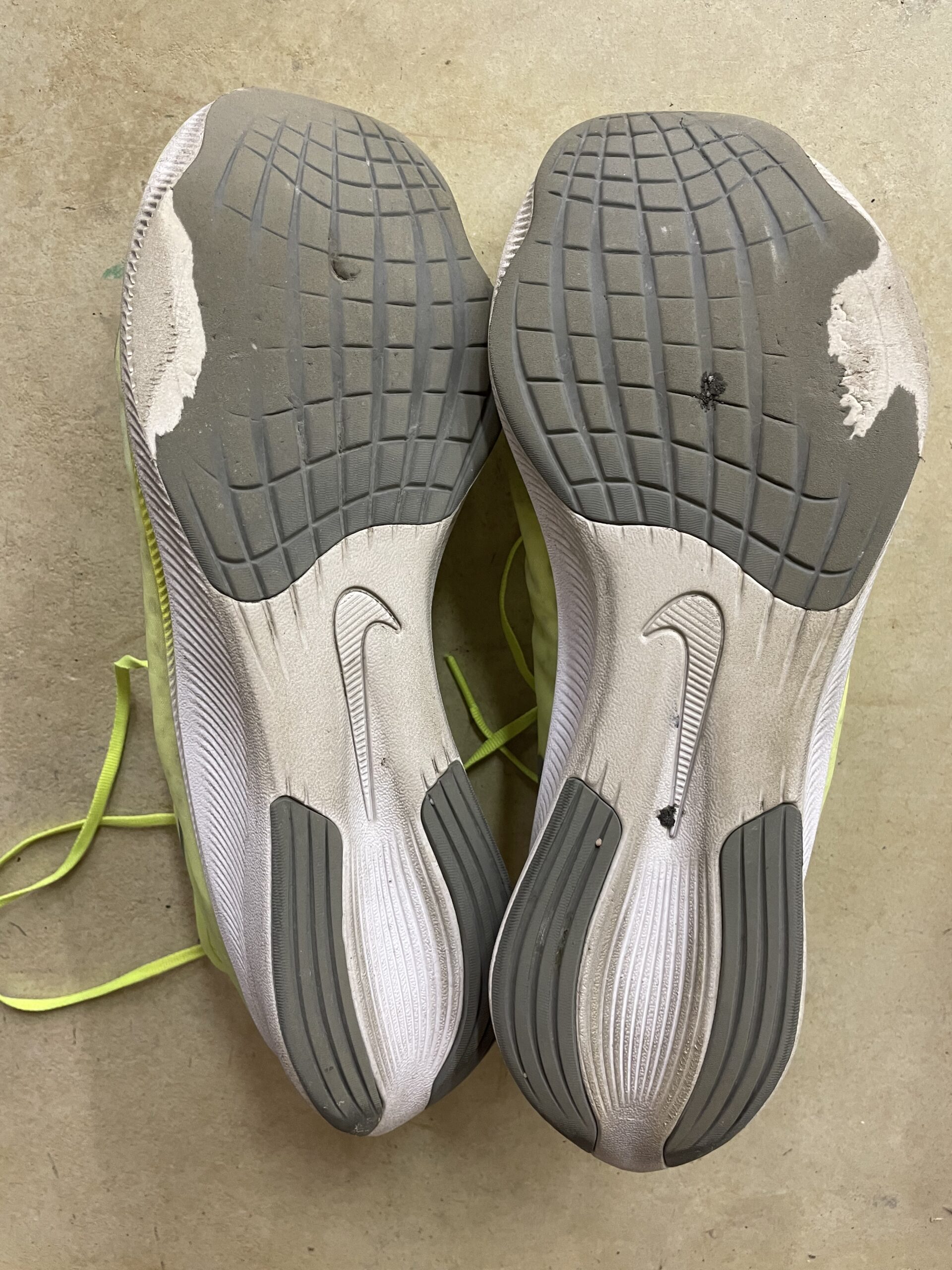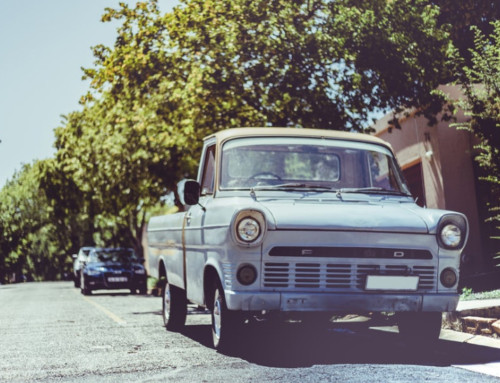Disclaimer: I am not a doctor and do not play one on TV. We are not giving medical advice in this article as you should consult your physician before attempting anything noted herein to avoid serious injury or harm. Finally, if you find this article helpful, please express your thanks for our sharing this information with you by viewing at least two other pages on website as this increases our website’s search rating. Thanks in advance!
Many people do not run because they lament that, “Running hurts my feet, ankles, and heels.” I felt the same way until I taught myself the following.
When I was nine years old, my father suffered a massive heart attack, and in those days where we lived, there was not a whole lot the medical profession could offer: you either lived or you died. Fortunately, my father lived after an extensive convalescence, and when he began to go to cardiac rehab, I would tag along and run on the outer track. I soon realized I could run long distances rather effortlessly and I have been running at least six miles a day virtually every day since.
Whether it was two-a-day football practices in the hot August sun, track meets, or baseball games in high school, or whether it was college baseball and a post college baseball “career” thereafter, the one constant is that I would run at least 6 miles each day in addition to everything else. I have had baseball teammates who played in the minor and major leagues tell me I ran more each morning then they did in an entire 164 game baseball season.
When I say I am a runner, I mean it: I run—not jog—always shooting for the 6 minute per mile range, and sometimes I get lucky and achieve that by accident. I run near both a public high school as well as a private high school and pathetically (and involuntarily), I still have to “reel in” and pass their cross country and track teams when they are doing their road work.
About 20 or so years ago, I began to develop severe pain in my heels and arches which would spread into knee, hip, and back pain as well. It wasn’t the shoes as I always trained in extremely lightweight marathon racing shoes (yeah, I know you are not supposed to run in those everyday, but I love the feeling of flying with weightless shoes, do not try this at home kids).
I went to a podiatrist whom I consider a close family friend who cares about me personally and he told me that I was suffering from plantar fasciitis and that I would benefit from wearing hard plastic 3/4 length “orthotics” that you could buy from a drugstore for about $19.00 and insert in my running shoes and baseball spikes. I asked how long before I could run again and he replied the pain would be gone as soon as I put the orthotics in my shoes. I hobbled out off his office as fast as I could but not before hearing him say behind me that the cheap orthotics were only temporary and that the condition would worsen and I would need increasingly taller custom-made orthotics.
I tried the orthotics on and ran six blissful, painless miles immediately afterward.
I started thinking about the snake oil salesmen on TV pushing softer shoe insoles to “alleviate” foot pain when the fix was, ironically, a harder—not a softer—shoe insert.
If this Cedar Rapids Personal Injury lawyer was ever in an accident and I could not run again, the thing I would miss most in life is running which is my muse, my law partner sounding board, my source of inner strength and peace, my constant companion, my purveyor of impeccable immunity and fountain of youth, my equilibrium after a days’ worth of deflecting the lies of insurance companies and their defense attorneys who get paid by the hour for lying whether they win or lose.
Simply stated, all is right with the world after I run. And despite having run nearly 100,000 miles in my life—enough for over 4 trips around the earth and counting—there are still days when I have to push myself to take the first step, but, without exception, I am so grateful I forced myself by the time I get to my second and third steps, because I know what it will feel like within a minute and I also know how I will feel when I am done: physically spent, exhilarated, and mentally recharged. Running is my medicine.
So when my heels, arches, and feet began to hurt again about two years after using my drugstore orthotics, I again hobbled into the podiatrists office. He stated my next —and last—step would be custom carbon fiber orthotic inserts for my shoes, the same type of stuff they make Formula 1 and Indy race cars out of so that the driver can survive 250mph crashes. It would cost nearly a couple thousand dollars altogether, and despite the fact that I had extraordinary health insurance, I would have to pay all of it out of pocket because, well, insurance companies are insurance companies. And so I went for the custom-made carbon fiber orthotics. The podiatrist warned me that this was just a temporary solution as the condition would again worsen over time and that there was nothing further that could be done after that.
And all was well with the world again for the next three years until my heels, arches, and feet—and then my ankles, knees, hips, and back—began to hurt again.
Since the podiatrist said he had no more miracles for me, I enlisted the help of a close friend who is an orthopedic surgeon specializing in foot and ankle injuries. He lamented and stated with a wistful stare in the distance that there was not much that could be done as he, a former avid runner, suffered the same fate some years back. I figured if there was some magical bullet, he would have used it himself. He did give me some wild looking braces that somewhat resembled (but were not quite as “attractive” as) a baseball catcher’s shin protector with straps under the foot designed to pull up on the arch and “stirrup” tendons. Running with two forklifts by my side pulling up my arches with a rusty chain would have been less obvious, more aerodynamic, and more aesthetically pleasing than his last ditch “fix.”
A number of years ago, I suffered a baseball injury and started going to Marsha Nieland, a yoga specialist and physiatrist. She helped me overcome a debilitating shoulder injury on my throwing arm which prolonged my baseball “career” a few more years. I recall her stating that when she injures a part of her body, she looks forward to using her background in yoga and physiatry (the study of how human bones, muscles, tendons, and joints work together) to understand the physiological reasons for what is causing the pain so she could take steps to properly stretch those areas and cure herself.
As a Cedar Rapids Personal Injury Lawyer, I often have to research the way bones, muscles, tendons, nerves, etc. work together so that I can cross examine the medical experts hired by the insurance companies to falsely testify my clients were not hurt in a serious accident, all in an effort to save money for the insurance company who hired their “testimony.”
With this background, I began to research on the internet diagrams of how all the muscles, tendons, bones, joints, and nerves work in the foot. After studying those diagrams, the following became clear which I will put into “Sam terms,” so that I—and hopefully you—will understand them.
There are tendons and ligaments that attach muscles underneath our heels and arches and run alongside up our ankles (like stirrups) up to our calves. So, I reasoned, if that is true, they key to unlocking heel and arch pain (and the attendant ankle, knee, hip, and lower back pain that inevitably follow) is to loosen tight muscles in my calves.
A bit more internet research and I discovered that the tendons and ligaments that run from under our feet to our calves actually tightens as we age, causing those “stirrup” tendons to essentially shorten, causing pain to our heels and arches even if we don’t run. In my research, I then came across the phrase “acupressure” which is a term coined to denote putting pressure on certain muscles in order to lessen any tightness and thus lessen pain.
Putting this altogether, I theorized that the key to releasing the pain in the heels and arches is to put pressure with my thumbs—or a golf ball, or even the rolled edged of a chair arm—on my calves until I found the excruciatingly tender spots where my calf muscles and attached tendons had tightened up, and then I would apply deep pressure for about 15 seconds. Yes, it hurts while you do it, but when you release after about 15 seconds, you feel immediate relief. Since there are often several tight spots, you have to repeatedly press additional areas on your calves until you find similarly tender spots where muscles/tendons are tight so you can apply pressure again for 15 seconds. You will need to repeat this each day until gradually graduating to the advice below after first checking with your physician to avoid potential injury.
Additonally, you will want to stretch your calf muscles. A great way to do this is stand on the bottom step of a stairway while facing the stairway. Make sure you hold onto the rail securely and place just your toes on that bottom step with your heels dangling below the step in the air (think of an Olympic high diver who stands on the very end of the diving board with their back to the pool as only their toes are on the diving board as their heels are lowered below the diving board and their toes). Hold this for ten seconds and do not bounce as bouncing can actually tighten your calves and feet. Do three 10 second sets for a total of 90 seconds. Think of a long, slow stretch for 10 seconds, not a bouncing stretch which will be counterproductive.
Then standing on the floor with your hands against a wall, step one leg back so that this foot is resting on your toes. Slowly lower your heel to the floor and hold for 10 seconds and again, do not bounce. If it is too difficult, bring your leg a little closer to the wall and try again; if it is too easy, step your leg back farther and try again. Again, do three 10 second sets for each heel.
In essence, the orthotics were lifting the tendons in my heels and arches up to give slack to my “stirrup tendons,” but of course, if you are not stretching out the tendons and releasing the tight calf muscles using acupressure and stretching as noted above, the pain will come back and you will have to use increasingly higher orthotics until the orthotics can no longer give you enough slack in that tendon.
So I used this acupressure and stretches in my calves to great effect as it helped me return to running without any orthotics even though I was wearing lightweight marathon race shoes for my daily trainers.
As I was running one day, I got to thinking: if this is all about getting slack in my “stirrup” tendons, why am I running while allowing my heels to strike the pavement first? I reasoned that if I ran on the balls of my feet like I do when I sprint, I would be stretching those “stirrup tendons” as I ran and this would prevent pain instead of having to dig my thumbs in my calves.
So I began to run on the balls of my foot and realized that after about a quarter mile, my calves began to hurt a lot, thus confirming my prior theory noted above that the calves and feet are one. So I learned to work my way up slowly on my daily 6 mile runs: run a mile or two heal striking, then run on the balls of my feet without allowing the heel to touch for a quarter mile, and then going back to heel striking and so on. I guarantee you if you skip this slow, gradual approach, you will hurt yourself, so build up slowly, and again, only try this after first consulting with your physician to avoid serious injury.
It took me nearly 6 weeks to slowly work my way up to running the full six miles on the balls of my feet without calf pain, but it was so worth it as I have been running this way pain free for over 15 years without orthotics while running in very lightweight marathon race shoes every day.
As an added bonus, I can wear those marathon race shoes for about 2,200 miles (e.g. for about a year) even though those shoes are designed to last literally for only about 100 miles or 4 marathon races. Simply stated, only allowing the front of my feet to touch the pavement not only helps preserve my running shoes while stretching my “stirrup tendons,” but it also acts as a shock absorber which is a lot easier and less impactful to the feet, ankles, knees, hips, and back, kind of like a spring.
A word to the wise: do not use racing marathon shoes for your daily training shoes (like I do) as you will be asking for trouble unless you really, really know what you are doing. Second, it has been my experience that running daily in running shoes with built in carbon fiber plates has a high chance of causing injuries in my experience (I found out by switching back to running shoes without built-in carbon plates and my feet have been very pleased and happy ever since. . .your mileage may vary but take a look on the internet to see other runners’ experiences in this regard as it appears I am not alone in this regard).
Look at the photo at the beginning of this article: only the front third of the sole is worn on my shoes with over 2,200 miles on them as you can still see the manufacturer’s lines and grooves on the soles over the back two thirds of the soles which look virtually brand new save for a little dirt occasioned by walking on my full feet during my cool down walk after my run.
During this entire process, I would continually check the wear patterns on the soles of my running shoes after each run to confirm I was landing correctly which also enabled me to work on running in a more neutral manner instead of running with a pronounced pronation (e.g. “pigeon toed”) which has reduced further stress and pain from my stride. (As a child, a doctor prescribed leg braces because my feet were allegedly so “pigeon-toed” but my father questioned a doctor making $10.00 for an annual check up in those days wanting to sell $80.00 braces so Dad politely declined; my Dad’s intuition was, as always, spot on as it turned out this “respected” pediatrician prescribed braces for virtually all of my friends who never used or needed them). I was always slightly pigeon toed and my running shoes would wear out at my big toes first, but I was always fast so I just viewed this as a minor inconvenience (until I put my metal baseball spikes on for the first time each year during spring training. . .(ouch)). By paying attention to the mechanics of how I run by examining the soles of my shoes after each run, I am more present and aware and can correct my stride during my next days’ run as I am no longer pigeon toed as evidence by the photo above). Again, consult your physician before trying any of the techniques noted in this article as the failure to do so can lead to serious personal injury.
If you have made it this far(!) and you find this article helpful, we ask that you please go to at least one or two other pages on our website before you leave our website as this will increase our website’s rating in the search engines as viewing one page only actually hurts rather than helps our website rating (the search engines count viewing one page for a half hour the same as someone who accidentally went to the wrong website and viewed a web page for one second before going to another website—I know, it doesn’t make sense but I don’t run the search engines, so thanks in advance for viewing a couple other pages, before leaving our website, and who knows, you just might find something as interesting, helpful, and insightful as this article).
© Copyright 2023 Sam Sheronick Law Firm, P.C., all rights reserved.






